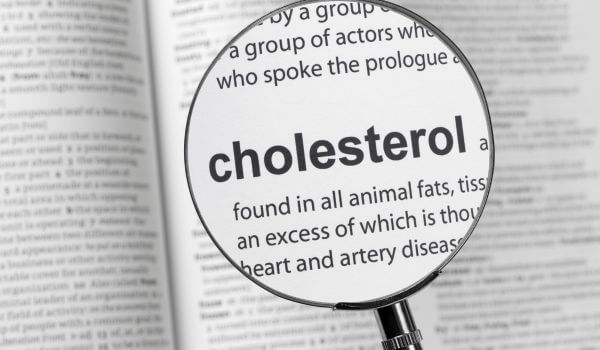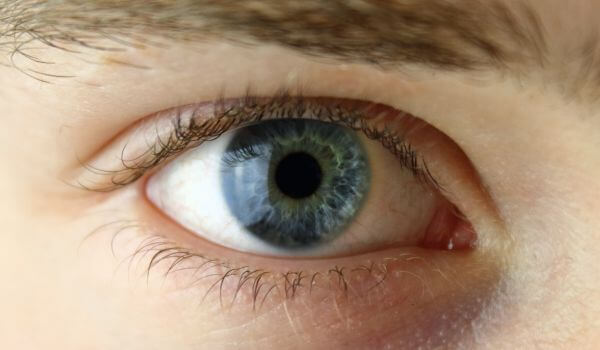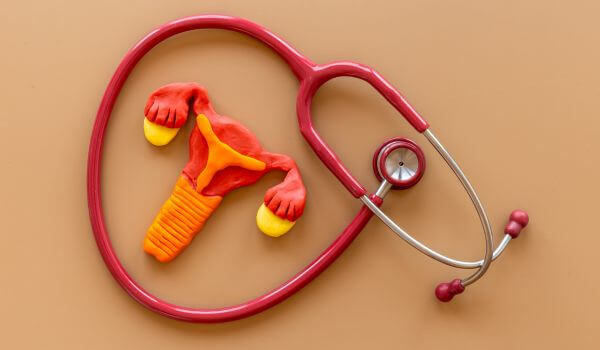 Many people regard the skin as simply an outer casing whose main task is to hold everything inside the body. That’s often the case until something goes wrong. The skin is a highly specialized and vital organ that performs various essential biological and metabolic functions. Proper care to maintain healthy skin and treatment in cases of disease or infection can contribute substantially to a person’s overall good health and well-being.
Many people regard the skin as simply an outer casing whose main task is to hold everything inside the body. That’s often the case until something goes wrong. The skin is a highly specialized and vital organ that performs various essential biological and metabolic functions. Proper care to maintain healthy skin and treatment in cases of disease or infection can contribute substantially to a person’s overall good health and well-being.
It’s worth remembering that the skin is the largest single organ in the human body, which makes good care and attention to the signs it can give out all the more important.
Here are some amazing facts about the skin and how healthy skin contributes to our overall health:
- Healthy skin serves as the body’s first line of defense, shielding against physical injuries, bacterial infections, UV radiation, and other environmental hazards.
- It regulates temperature, thanks to either sweat’s evaporation or blood vessels’ constriction to reduce the exposed surfaces when it’s cold. Cooling the body may be necessary when the external temperature is high or when the body is producing excess heat from exercise or a raised metabolic rate (a side-product of infection). Without adequate cooling, there is a very real chance of severe damage to the brain from prolonged elevation of internal temperatures.
- Skin acts as a sensory organ that helps in a person’s interaction with their environment through the perception of touch, pain, and temperature.
- Healthy skin repairs and regenerates after injuries by forming new skin cells to replace damaged ones.
- It controls bleeding in case of injury by allowing the blood’s in-built clotting mechanism to take over when the outer layer is breached and blood comes into contact with the air.
- Healthy skin promotes the production of Vitamin D, a critical nutrient. This happens when the skin is exposed to sunlight and is necessary to promote the absorption of calcium and phosphorus, which are essential for bone health.
The skin performs these and other functions using several in-built mechanisms, such as:
- Maintaining a balanced internal environment by preventing excessive water loss from the body and barring the entry of water
- Allowing for the removal of waste products and toxins from the body through sweating (although to a lesser extent than the lower bowel and kidneys).
- Generating natural oils to moisturize the skin, maintain its elasticity, and prevent dryness or flakiness.
- Storing lipids and water for use as energy resources and to maintain hydration levels.
On top of these automatic functions, the skin plays a significant role in physical appearance and social interaction.
Because any conditions that affect the skin are immediately visible, not only the affected person may be aware of the symptoms, but friends and family may be seeing the consequences.
Basic Anatomy and Biology of the Skin
The skin has three layers: the epidermis, the dermis, and the hypodermis. Each layer serves a distinct function and harbors unique cells and structures.
- The epidermis is the outermost layer, primarily responsible for providing a barrier against external invaders and retention of body fluids. It houses cells that produce keratin, the protein that lends the skin its protective qualities.
- The dermis is situated immediately beneath the epidermis. This layer contains connective tissue, hair follicles, and sweat glands. It’s the layer that contains the nerve endings that allow perception of touch, pain, and temperature.
- The hypodermis (the subcutaneous layer) consists mainly of fat and connective tissue. It helps in insulating the body and cushioning internal structures.
Common Skin Diseases, Infections, Conditions and Treatments
Many conditions and diseases are layer-specific. Now that we understand the structure and function of the skin’s layers, we can look at a few of the most common skin diseases and conditions layer by layer.
Epidermis:
| Condition / disease | Symptoms | Treatments |
| Contact dermatitis | An inflammatory reaction occurs when the outer skin comes in contact with an allergen or irritant. Symptoms include redness, itching, and blistering. | Many over-the-counter mild corticosteroids can be helpful for dermatitis. A doctor may prescribe a stronger cream, such as Hycomycin or Fucidin Cream. |
| Impetigo | A bacterial skin infection that primarily affects children (highly contagious) causes red sores that can rupture, ooze, and develop a yellow-brown crust. | Impetigo often clears up without treatment after two to three weeks. Treatment may be recommended to reduce the risk of the infection being passed on to others. Oral antibiotics such as Keflex (cephalexin) or Vibramycin (doxycycline) are often prescribed, but a more appropriate treatment may be an external application of a specific antibiotic such as Fucidin Ointment. |
| Actinic keratosis | A skin condition characterized by scaly, crusty growths caused by damage from the sun’s ultraviolet rays. It may be a precursor to squamous cell carcinoma. | If a growth becomes precancerous (which happens in 5-10% of cases), it can be surgically removed. People with keratosis should wear sun-protective clothing. |
Dermis
| Condition / disease | Symptoms | Treatments |
| Cellulitis | A bacterial skin infection primarily affects the epidermal layer, leading to red, swollen, and painful skin areas, usually after a break in the skin allows bacteria to enter. The most common infection comes from Streptococcus pyogenes. | Mild cellulitis can be treated with antibiotics, such as Keflex (cephalexin), Bactrim (combining sulfamethoxazole and trimethoprim), or Vibramycin (doxycycline). |
| Rosacea | A chronic condition characterized by facial redness and sometimes pimples. Its exact cause is unknown, but it is thought to involve dilated blood vessels in the dermis.
|
Usually, rosacea clears up on its own in a few days. If the symptoms are more severe, an oral antibiotic medication may be recommended as these can help reduce skin inflammation. |
| Keloids | Scar formations that extend beyond the original wound area resulting from an overproduction of collagen during the healing process. | Cosmetic surgery or injections of Botox |
| Diffuse cutaneous leishmaniasis | A parasitic disease is caused by the Leishmania parasite, transmitted through the bites of infected female sandflies. The parasite predominantly invades the macrophages in the dermal layer, where it multiplies and can cause a variety of skin lesions, often starting as papules and potentially progressing to ulcerative lesions. | It may require doctor-administered injections of pentavalent antimonials such as sodium stibogluconate or meglumine antimoniate. The mechanism of these drugs is still unknown after more than 60 years. |
| Hair-related conditions | Unwanted facial hair (primarily in menopausal women)
Receding hairline/hair loss when areas of hair begin to thin out.
The most common causes of hair loss for both women and men are aging, hormonal changes, stress, and genetic factors. |
FDA has now approved Vaniqa cream, which has been clinically proven to reduce unwanted facial hair growth (UFH) in women.
Phyllotex is an OTC capsule that can reduce excess hair shedding and promote faster growth of thicker and longer hair. It is natural, vegetarian, without side effects, and intended for both women and men. |
Hypodermis:
| Condition / disease | Symptoms | Treatments |
| Lipomas | Benign tumors composed of fatty tissue originating in the hypodermis. They are generally soft, movable lumps beneath the skin. | There are no medications to treat lipomas. If necessary, it can be removed surgically.
|
| Hypodermic scleroderma | A rare form of scleroderma that affects the hypodermis, causing the skin to harden and thicken over time. | There are no FDA-approved drugs to treat scleroderma on the skin. Dermatologists can prescribe off-label ointments containing calcipotriol (Dovobet or Dovonex). |
| Insulin lipohypertrophy | A lump of fatty tissue forms under the skin, most often seen in individuals who repeatedly inject insulin in the same spot. An accumulation of fatty tissue can interfere with insulin absorption. | There are no medications to treat this condition. If necessary, the lump can be removed with liposuction.
|
Question people ask
What is the most common type of treatment recommended for healthy skin?
Selecting the right medication for skin conditions such as dermatitis depends on the location and type of disease or infection. Topical and oral drugs are sometimes prescribed for skin conditions such as antibacterials.
What is the difference between cutaneous and visceral leishmaniasis?
There are several different forms of leishmaniasis. The most common is cutaneous leishmaniasis caused by rod-shaped kinetoplast, which causes skin sores and cutaneous lesions. Visceral leishmaniasis affects several internal organs, usually the spleen, liver, and bone marrow.
Can you put hydrocortisone cream on cellulitis?
Home-based remedies like calamine lotion, baking soda paste, or hydrocortisone cream on the affected area can reduce symptoms. Antihistamines such as Zyrtec, Allegra, or Claritin can be applied two to three times a day to reduce itching. Use an OTC pain reliever if needed.
Do people with AIDS have skin problems?
Skin conditions, including Kaposi sarcoma, thrush, and herpes can occur in people with HIV/AIDS. Many are “opportunistic” infections caused by a weakened immune system.
HIV rash is the most common skin-related HIV symptom. A typical HIV rash is a flat red area on the skin that is covered with small bumps. Treatment for HIV/AIDS could include Biktarvy, provided they are not resistant to the emtricitabine or tenofovir integrase inhibitor class.
















